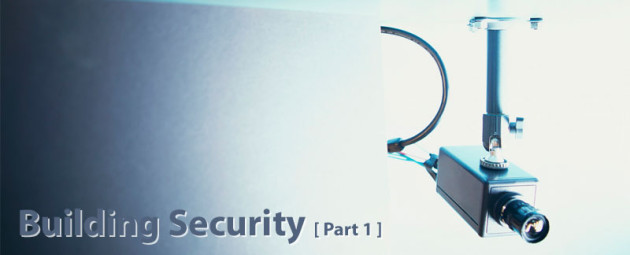BY TED TUDOR,
Schrader Commercial Properties – PROPERTY MANAGEMENT Division
ttudor@schradercommercial.com
July 23, 2015
We at Schrader Commercial Properties, LLC, provide unparalleled Property Management and related services, and that is the basis of our very broad experience and success. Read through this news item from our building security experience and give us a call. We can take you to the next level in commercial property services.
When it comes to building security, I would be the first one to advise property managers or building owners that speaking directly with a reputable security company professional is probably the best assurance that you are getting good information and advice for security. What I can add are some practical observations, from someone who utilizes security services on several buildings.
Overall, security systems, either manned or un-manned, involve some level of equipment infrastructure, and once they are installed in a commercial building the serving company tends to be “in place” for a long time, or, sometimes indefinitely. This is because service contracts usually carry some obligation of term. Past the contract term, service longevity is particularly true if there are no obvious service blunders and the rates stay at reasonable levels.
As you evaluate your building security, here are some things worth remembering:
- You should check in with your security provider, and place the system on test regularly, for several reasons. First is that you should not assume that because you have paid the security company’s bill on a regular basis, that all things are operating per your expectations, especially un-manned security.
- Make certain that the information that the security company has on file, is accurate and up to date. Who do they have on their call list, for “X” property, when they get an alarm signal? Do you need to add or subtract names?
- Are the phone numbers for the above personnel accurate? Personnel change within an organization from time to time, and this especially occurs with a change in ownership or management of a property.
I learned the hard way that “building security” can have several meanings, when dealing with un-manned security. The first level of securing a building is locking it against public entry during “off” hours and weekends. Most large commercial buildings will engage a magnetic lock, or “mag-lock” device, on all access doors, which are controlled by the security company from a remote location. Tenant hours will vary by business, so you should keep a log of normal office hours for each tenant. From this information, you can arrive at a reasonable time that the building is automatically locked, or unlocked, to accommodate them and their clients. Be vigilant to holiday schedules, which may alter whether tenant businesses are open or closed. If everyone is gone, the building should be secured against unauthorized entry.
Use of the Mag-lock device might make you believe that such is the only security you need, and that may be the case. But I question what happens when a door fails to close properly, leaving the Mag-lock unsecured. If you don’t have the monitoring feature that actively reports if a door is left ajar and not making contact to re-engage the Mag-lock, then you really don’t have complete un-manned security. I advise installing the necessary sensors, and checking if the doors are operating normally. This can easily be determined by physically observing all public entry and exit doors that have monitoring devices. Test them by giving them an opening push of varying degrees. A full push which totally opens the door, may have enough energy and weight to swing the door back fully closed with the help of a mechanical door closer mounted at the top of the door. A less than full push may not generate the energy necessary for the door to swing back fully closed. If so, a call to your local door and window specialist, or even the security company for a service adjustment is in order.
The fully closed door-monitoring feature is most useful for buildings that have tenants, visitors and service personnel that come and go after regular hours. This includes janitorial and cleaning crews engaged for the building or specific tenants. After hours access is usually accomplished by means of an electronic key fob or card reader that has been assigned to a particular person, and will unlock the door. This method is easy, but property managers are advised to regularly review the key fob or access card list, to make certain that it is up to date and cards or fobs that should have been de-activated, are not still allowing entry to unauthorized personnel.
Next month – read the rest of the Security advice in Part 2 – covering Video Monitoring and Elevator Access. Until then, if you have Property Management needs, give Schrader a call. WE bring Service to a new level.







